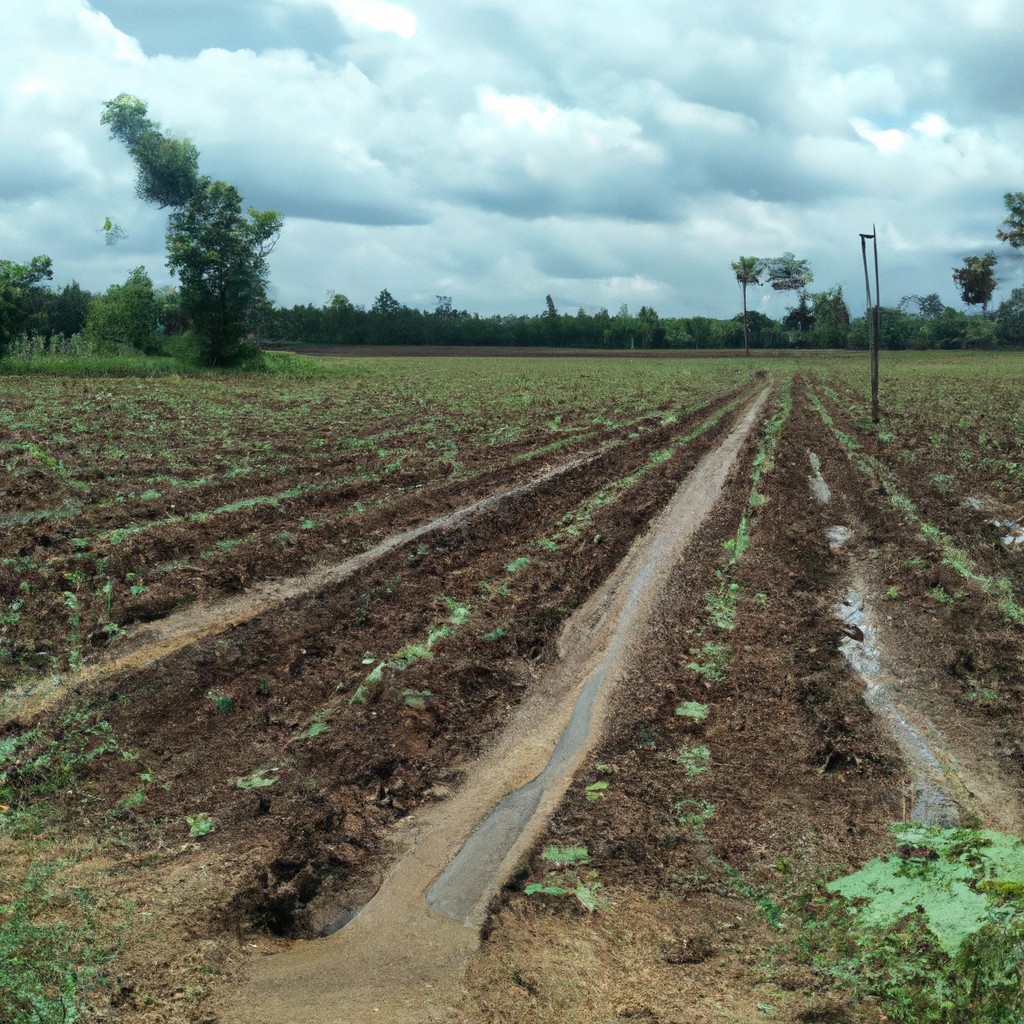Learn about sound agriculture, a practice that uses acoustic techniques to boost plant growth and pest control, while offering sustainable benefits for farmers and the environment.
Look Inside:
Principles of Sound Agricultural Practices

At the core of sound agricultural practices, there’s a commitment to nurturing the earth for future harvests. This involves embracing polyculture over monoculture—diversifying crops to avoid depleting soil nutrients and encouraging natural pest control. Crop rotation earns its stripes by giving the land time to recover, while cover cropping acts like a blanket for the soil, protecting it and boosting fertility.
Beyond the soil, these practices pay heed to water management, advocating for techniques such as drip irrigation that quench crops’ thirst without wasting a precious drop. Precision agriculture leaps into the picture here, using technology to apply water, fertilizers, and pesticides in just the right amounts and locations, avoiding excess.
Lastly, think of integrated pest management as the farm’s own neighborhood watch, using biological warfare rather than chemical onslaughts to keep pests in check. It’s about knowing who the bad guys are, who the good guys are, and only stepping in when needed—a delicate dance of observation and action.
Together, these points sketch a farming approach that is as concerned about tomorrow’s yield as it is about today’s. It’s a long-view kind of love for the land.
Soil Health and Nutrient Management
Soil acts as the pantry of our crops, storing and serving essential nutrients. To foster fertile ground, it’s crucial to strike the right balance of these nutritional elements. Much like a well-crafted recipe, too much or too little of one ingredient can turn a potential feast into a flop.
Start with regularly testing your soil; it’s like a routine check-up for your garden or farm. These tests reveal pH levels and the presence of crucial nutrients like nitrogen, phosphorus, and potassium. Based on the results, you can refine your soil’s diet, adding organic compost, manure, or other amendments to fill nutritional gaps.
Crop rotation also weaves magic into the tapestry of soil health. By switching up your crops seasonally, you not only break pest cycles but also help maintain a diverse nutrient profile in the earth. Each plant species has its menu of required nutrients and leftovers it leaves behind, benefiting the next plant in the rotation.
Cover cropping deserves a tip of the hat here. Think of cover crops as the guardians of soil between planting seasons. They prevent erosion, smother weeds, and, as they decompose, turn into a smorgasbord of nutrients for future crops.
Here’s an old farming pearl: “Feed the soil, not the plant.” Healthy soil brimming with microorganisms and rich in organic matter is the foundation for producing resilient and nutritious crops. This approach doesn’t just aim for short-term gain; it nurtures the soil, making it a legacy for future farming generations.
Remember, the symphony of sound agriculture is incomplete without the solo of healthy soil and adept nutrient management.
Renewable Energy Integration in Agriculture
Farms harnessing the sun and wind for power are no pie in the sky. Solar panels convert sunshine into electricity, slashing monthly energy bills and reducing dependence on fossil fuels. Wind turbines on farmland offer a twofold advantage: generating power while preserving valuable soil beneath for planting. Furthermore, manure and crop residues are not merely waste but can transform into biogas through anaerobic digesters, which are a win for the farmer’s pocket and the planet.
The integration of renewables is more than a cost-saving move; it’s a nod to resilience. Think of it as putting eggs in different baskets – when one energy source plummets in availability, others can pick up the slack. As a bonus, certain renewable energy investments can become additional revenue streams. For example, leasing land for wind turbines ensures farmers a steady income, irrespective of the season’s yield.
This shift also softens agriculture’s environmental footprint. By banking on renewables, farms cut greenhouse gas emissions, contributing to a much-needed climate change mitigation. Plus, energy independence means farmers can operate even amidst fluctuating energy prices and supply disruptions.
In essence, it’s like the circle of life for energy. What comes naturally from the environment goes back into production – closing the loop and keeping it all ticking along nicely.
Policies Supporting Sound Agricultural Practices
Governments can play a pivotal role in fostering environments conducive to sound agricultural practices. By implementing policies that promote sustainable methods, they offer both a carrot and a stick approach to encourage farmers to adopt practices that benefit the environment and society.
Financial incentives often serve as a strong motivator. These can include subsidies for organic farming, grants for implementing renewable energy sources, and tax breaks for conservation efforts. Such incentives lower the financial barriers that can deter farmers from switching to more sustainable practices.
Conversely, regulatory measures set boundaries within which agriculture must operate to protect natural resources. These might encompass restrictions on pesticide use, mandates for crop rotation, and requirements for water conservation. These standards aim to mitigate the adverse effects of farming on ecosystems.
Education and extension services also form a scaffold supporting sound agriculture. Programs that educate farmers about the benefits and methods of sustainable agriculture empower them to make informed choices. Extension services provide the necessary technical support to put theory into practice on the ground.
Lastly, research and development are critical. Policy-directed funding towards R&D enables the continual improvement of farming techniques. Innovations in soil health, pest management, and resource-efficient technologies directly contribute to the sustainability of agricultural systems.
Collectively, these policy tools can guide agricultural systems away from depletive practices and towards a more balanced approach that respects the earth’s limits while securing food for future generations.
The Role of Sound Agriculture in Sustainable Development Goals
Sound agriculture plays a pivotal role in achieving several Sustainable Development Goals (SDGs). Practices such as crop rotation, integrated pest management, and agroforestry contribute to ending hunger and promoting food security (SDG 2). By producing nutritious food that maintains the health of the land, these methods feed people without depleting resources for future generations.
Additionally, these techniques reduce the environmental impact of farming, supporting efforts to combat climate change (SDG 13). They help sequester carbon in the soil and lower greenhouse gas emissions from agricultural activity, tackling a significant source of global emission.
Maintaining water quality and availability is crucial for life on land (SDG 15) and under water (SDG 14). Sustainable agricultural practices minimize runoff and erosion, keeping waterways free of sediments and pollutants. By managing water efficiently, sound agriculture conserves this vital resource and sustains aquatic ecosystems.
Finally, sound agriculture promotes sustainable economic growth (SDG 8) and decent work (SDG 8). Sustainable farms often require a skilled labor force, providing stable employment and fueling local economies. This form of agriculture supports communities, laying the groundwork for growth and prosperity.




